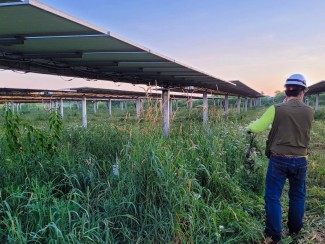
A process invented at UW–Madison is now removing phosphorus at Madison’s regional sewage treatment plant. Like many other advances from the colleges of agriculture and engineering, this one is designed to reduce the cost and environmental consequences of wastewater treatment.
The system, the brainchild of soil science professor Phillip Barak, focuses on reducing releases of phosphorus, a plant nutrient that feeds overgrowths of algae in lakes and streams. The system may also improve pipe flow in the Madison Metropolitan Sewerage District (MMSD) treatment facility by reducing the accumulation of phosphorus compounds.





